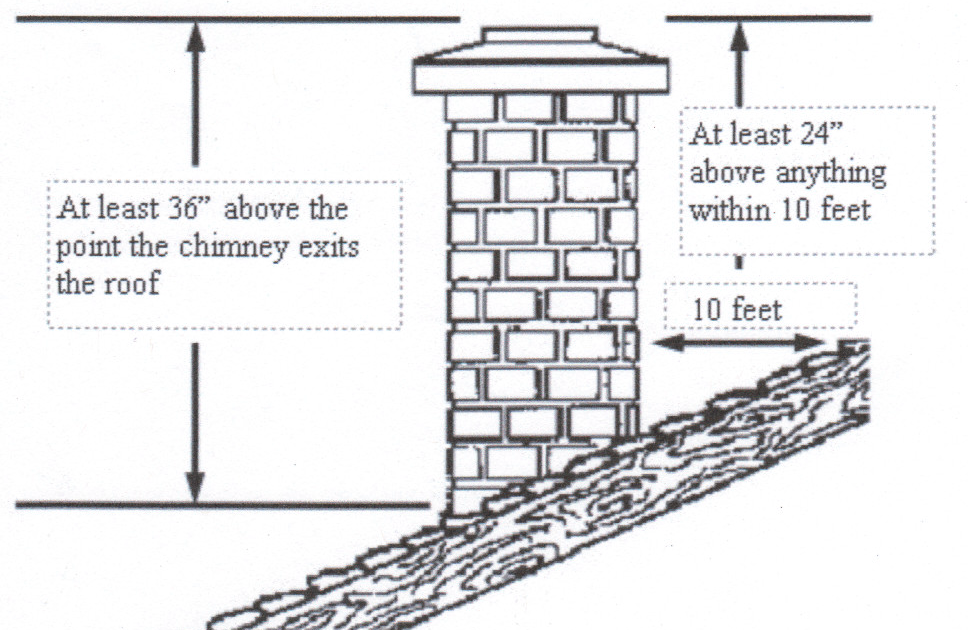I'm in the process (final testing phase really) of installing a Heatmax2 wood furnace. I installed a new 6" double wall insulated chimney. The only option was to run it out the basement wall and up the side of the house. I have 22 ft of pipe above the tee. There is a 2 ft piece going through the wall (pitched nearly 1 inch). Connecting to stove (see pic) I've got 2 45° elbows with a barometric damper in between. Below the damper I used a short piece of stovepipe with a drawband to make final connection.
![[Hearth.com] Wood furnace chimney draft ??? [Hearth.com] Wood furnace chimney draft ???](https://www.hearth.com/talk/data/attachments/259/259973-df269f2bf5ad611910d1f939be2c1150.jpg?hash=QkWU8Bs_KW)
Got some cold weather (48 F) so I lit a fire to test my set up. I measured flue temp with a magnet gauge as well as my inkbird temp controller (Celsius only). With the first small load it struggled to reach .07 on the Dwyer25. Peak flue temp was around 360F (internal). After the coals burned down some I tossed in 6 smaller splits (14-20% MC) They took off beautifully. Flue temp reached 460F so I closed the draft. Immediately the flue temp plumetted to around 230F. Draft was measuring .02-.03. Secondaries disappeared and even back puffed a few times. Is that normal? Opening a window didnt seem to help. I opened the draft again and it took off. With a smaller load it never did really burn with the draft closed. Even with a nail holding it slightly open I would only reach 240F. Do I need bigger loads to see more pleasing results?
After the second load burned down to coals with occasional flames (draft closed) it was registering .03 draft. Cracking the door open it jumped to .04. Opening the door increased draft to .05 yet a lot of smoke still escaped. Why is there smoke coming out the door?
Sorry for the long post! It seems to me like I don't have enough draft. The BD was covered with tin foil during most of this time. There are some stovepipe connections that could be leaking a bit.
Please give me your advice!
![[Hearth.com] Wood furnace chimney draft ??? [Hearth.com] Wood furnace chimney draft ???](https://www.hearth.com/talk/data/attachments/259/259973-df269f2bf5ad611910d1f939be2c1150.jpg?hash=QkWU8Bs_KW)
Got some cold weather (48 F) so I lit a fire to test my set up. I measured flue temp with a magnet gauge as well as my inkbird temp controller (Celsius only). With the first small load it struggled to reach .07 on the Dwyer25. Peak flue temp was around 360F (internal). After the coals burned down some I tossed in 6 smaller splits (14-20% MC) They took off beautifully. Flue temp reached 460F so I closed the draft. Immediately the flue temp plumetted to around 230F. Draft was measuring .02-.03. Secondaries disappeared and even back puffed a few times. Is that normal? Opening a window didnt seem to help. I opened the draft again and it took off. With a smaller load it never did really burn with the draft closed. Even with a nail holding it slightly open I would only reach 240F. Do I need bigger loads to see more pleasing results?
After the second load burned down to coals with occasional flames (draft closed) it was registering .03 draft. Cracking the door open it jumped to .04. Opening the door increased draft to .05 yet a lot of smoke still escaped. Why is there smoke coming out the door?
Sorry for the long post! It seems to me like I don't have enough draft. The BD was covered with tin foil during most of this time. There are some stovepipe connections that could be leaking a bit.
Please give me your advice!





![[Hearth.com] Wood furnace chimney draft ??? [Hearth.com] Wood furnace chimney draft ???](https://www.hearth.com/talk/data/attachments/260/260011-c3efbc12cf8bb110f5b167be07c0326c.jpg?hash=lioOTKUE5N)